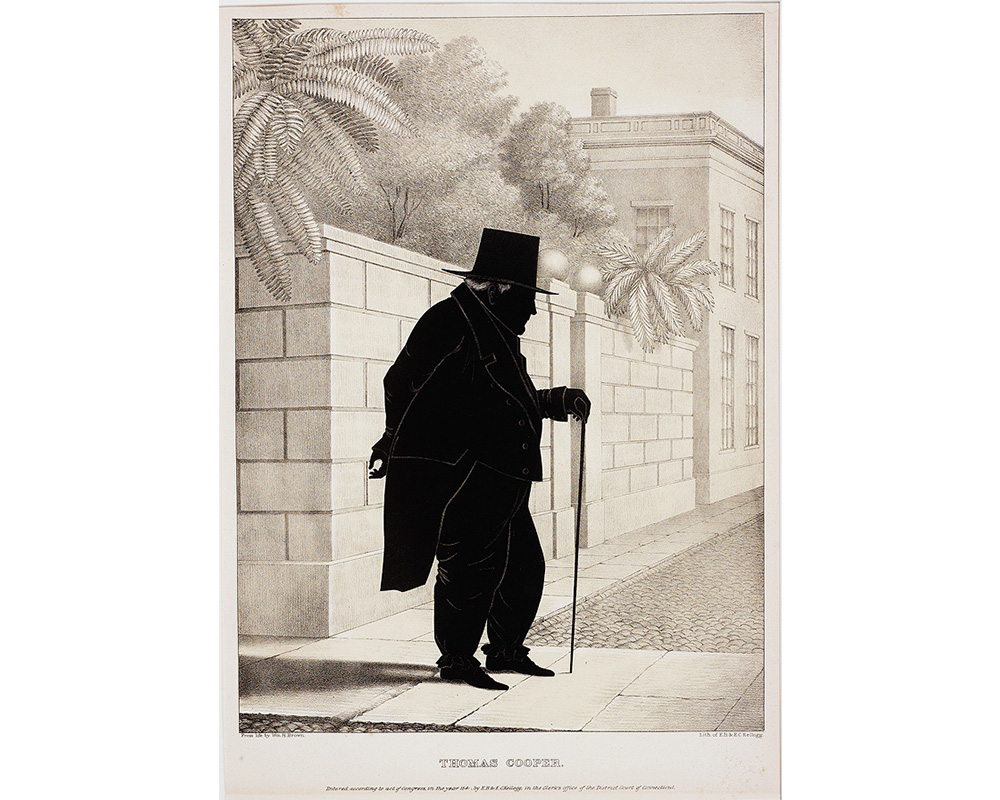
Portrait Gallery of Distinguished American Citizens
Guest blogger Jennifer Guerin is a Smith College student, class of 2014, majoring in American Studies and History with focuses in Public History and Social Movements. She is a Student Assistant in the Cunningham Center for Prints, Drawings, and Photographs.
I've been fascinated with silhouette portraiture for a large portion of my life. As a kid, I went to Disneyland with my family fairly regularly, and one of the Main Street shops had an artist that made cut-out silhouettes. Somewhere in the depths of my closet I have several silhouettes done of me, or of me and a friend. Younger me was interested in the speed with which the silhouettes were made, and now as a student of art and culture, I'm particularly interested in how that short time frame of creation interacts with our subconscious ideas about what art is, as I personally find that many people automatically see art as a time consuming process by necessity.
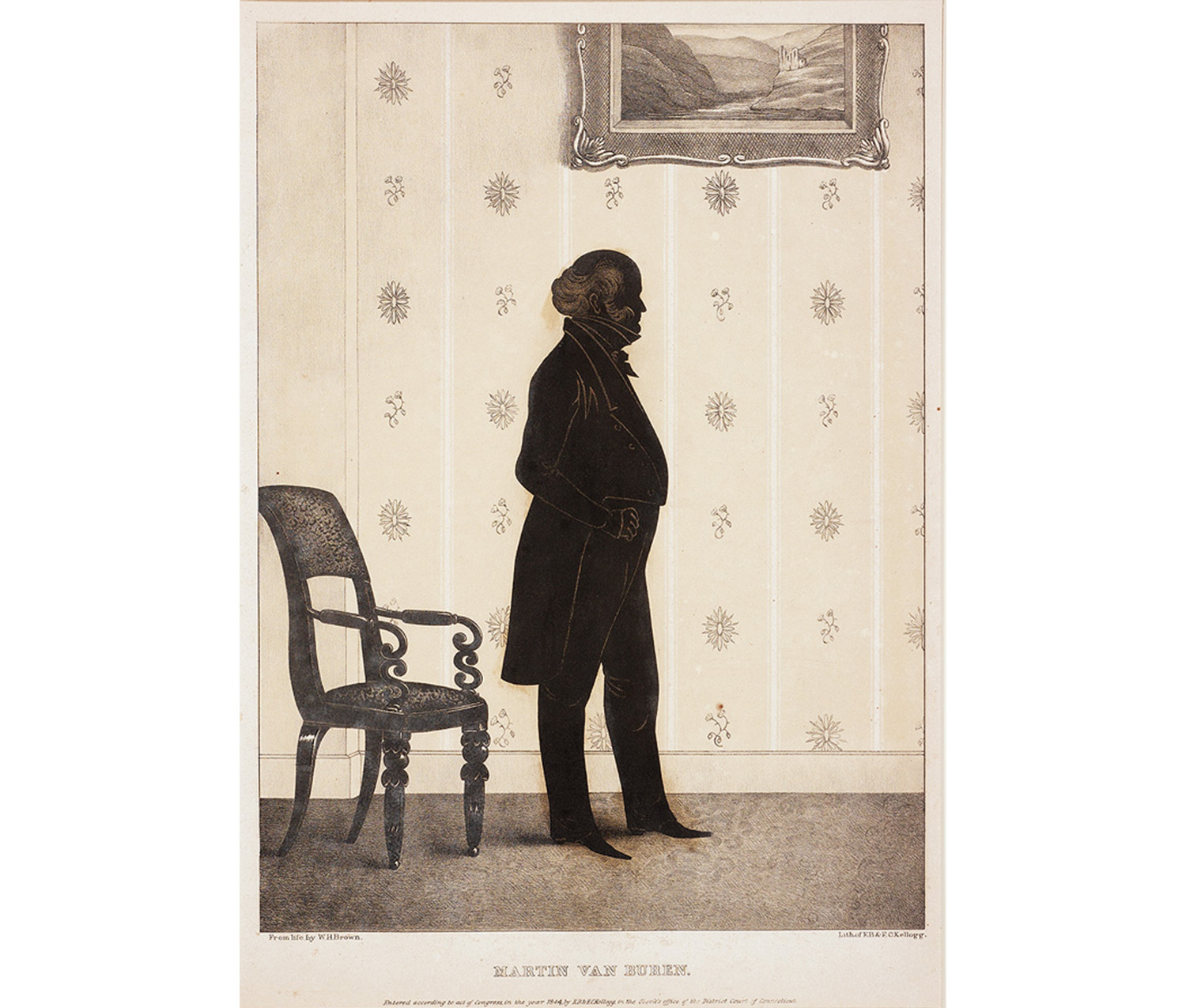
William Henry Brown. American, 1808–1883. Martin Van Buren, from Portrait Gallery of Distinguished Americans, 1844. Lithograph printed in black on medium thick, smooth, cream-colored paper. Gift of Mrs. Chester Dale. Photography by Petegorsky/Gipe. SC 1963.106.9.
Silhouette portraiture is an artistic style which involves representing the profile or shadow of an object as a solid shape, without any internal detail; it became popular in the 1800s, though there are certainly examples prior to that period. Though the style was sometimes used in painting, silhouettes were most often cut out from black paper or heavier black card. Because a skilled silhouette artist could produce a number of portraits fairly quickly, it seems to have been a reasonably reliable form for artists looking to make a living in a more commercial way. Additionally, because artists could do a lot of sittings and make a lot of portraits in short periods of time, they did not necessarily need to charge particularly high prices, which also allowed a larger sector of society to have access to this type of art.
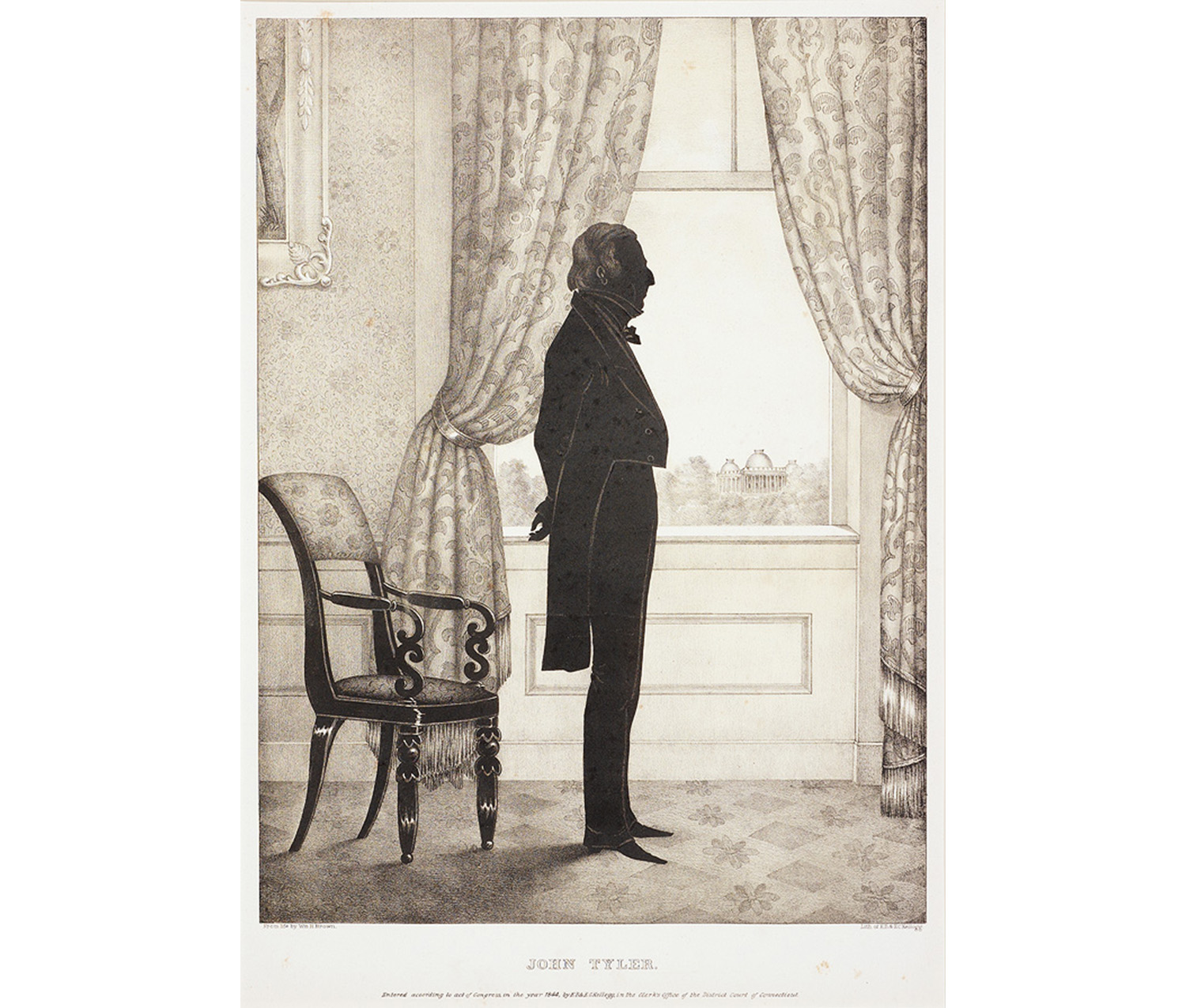
William Henry Brown. American, 1808–1883. John Tyler, from Portrait Gallery of Distinguished Americans, 1844. Lithograph printed in black on medium thick, smooth, cream-colored paper. Gift of Mrs. Chester Dale. Photography by Petegorsky/Gipe. SC 1963.106.5.
The Cunningham Center owns a particularly interesting set of silhouettes, done by an artist named William Henry Brown. Brown was a popular silhouette maker in the 1800s, and was thus able to get a number of famous Americans to sit for him. In 1845, he created the Portrait Gallery of Distinguished American Citizens, which featured prints of 26 of his silhouettes, which were attached to lithographed backgrounds before a print of the entire image was produced for the book. The prints were accompanied by short biographies of these people and a printed copy of some sort of correspondence to provide an example of their handwriting.
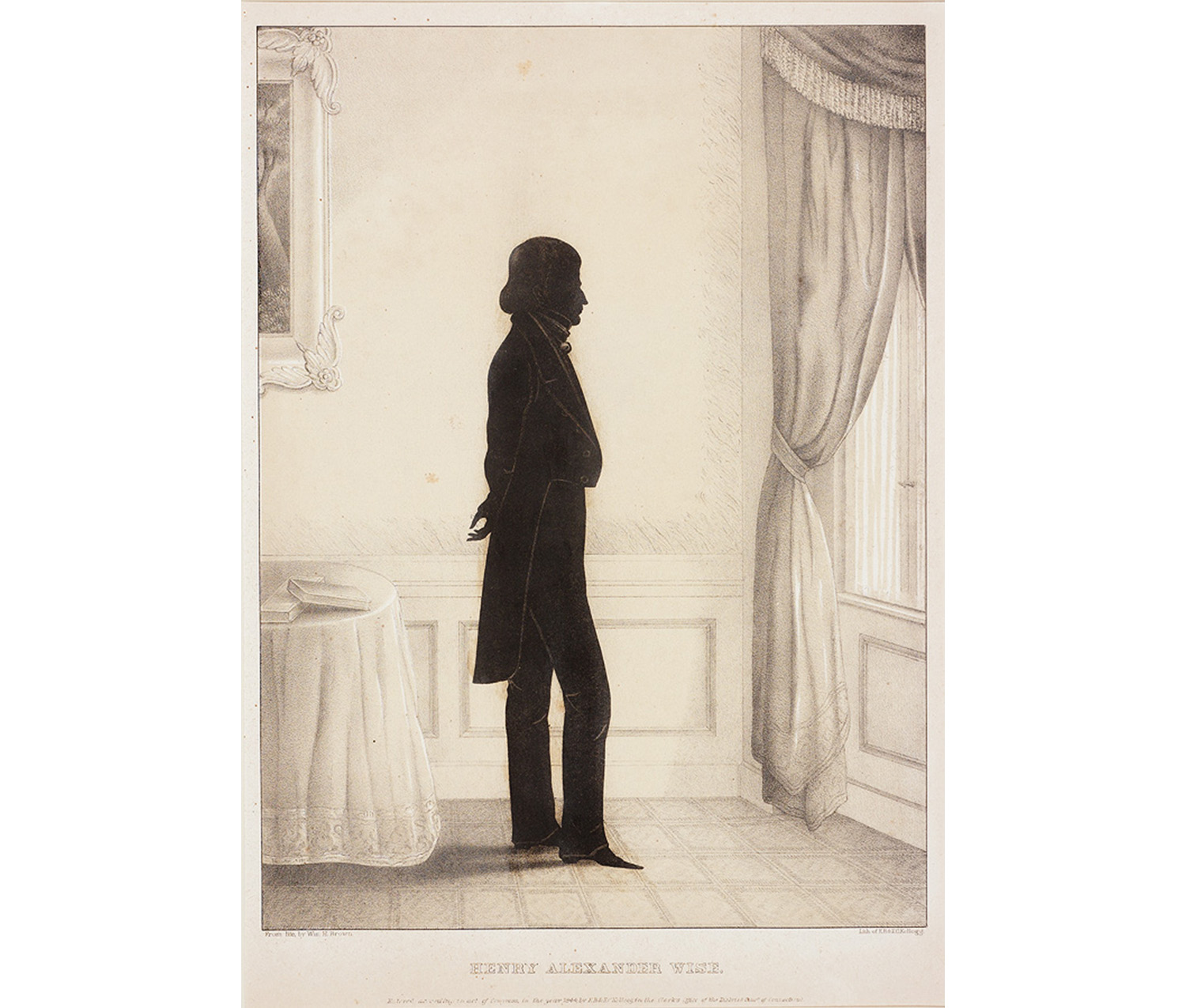
William Henry Brown. American, 1808–1883. Henry Alexander Wise, from Portrait Gallery of Distinguished Americans, 1844. Lithograph printed in black on medium thick, smooth, cream-colored paper. Gift of Mrs. Chester Dale. Photography by Petegorsky/Gipe. SC 1963.106.12.
Some of these figures are still well known today, such as former Presidents Van Buren, Tyler, Quincy Adams, and Jackson, while others have faded somewhat in the historical memory, such as Samuel Southard (a U.S. Senator, Secretary of the Navy, and the tenth Governor of New Jersey) or Henry Wise (a United States Congressman and governor of Virginia, who would go on to be a general in the Confederate States Army). While many silhouette portraits traditionally depict the profile of the figure from the shoulders up, Brown’s silhouettes are full body, which is an interesting choice for depicting these highly respected people, as full body images can be decidedly less flattering (take, for instance, Dixon Hall Lewis, who is partially known for having weighed somewhere in the area of 500 lbs., and is clearly shown as such in Brown’s portrait).
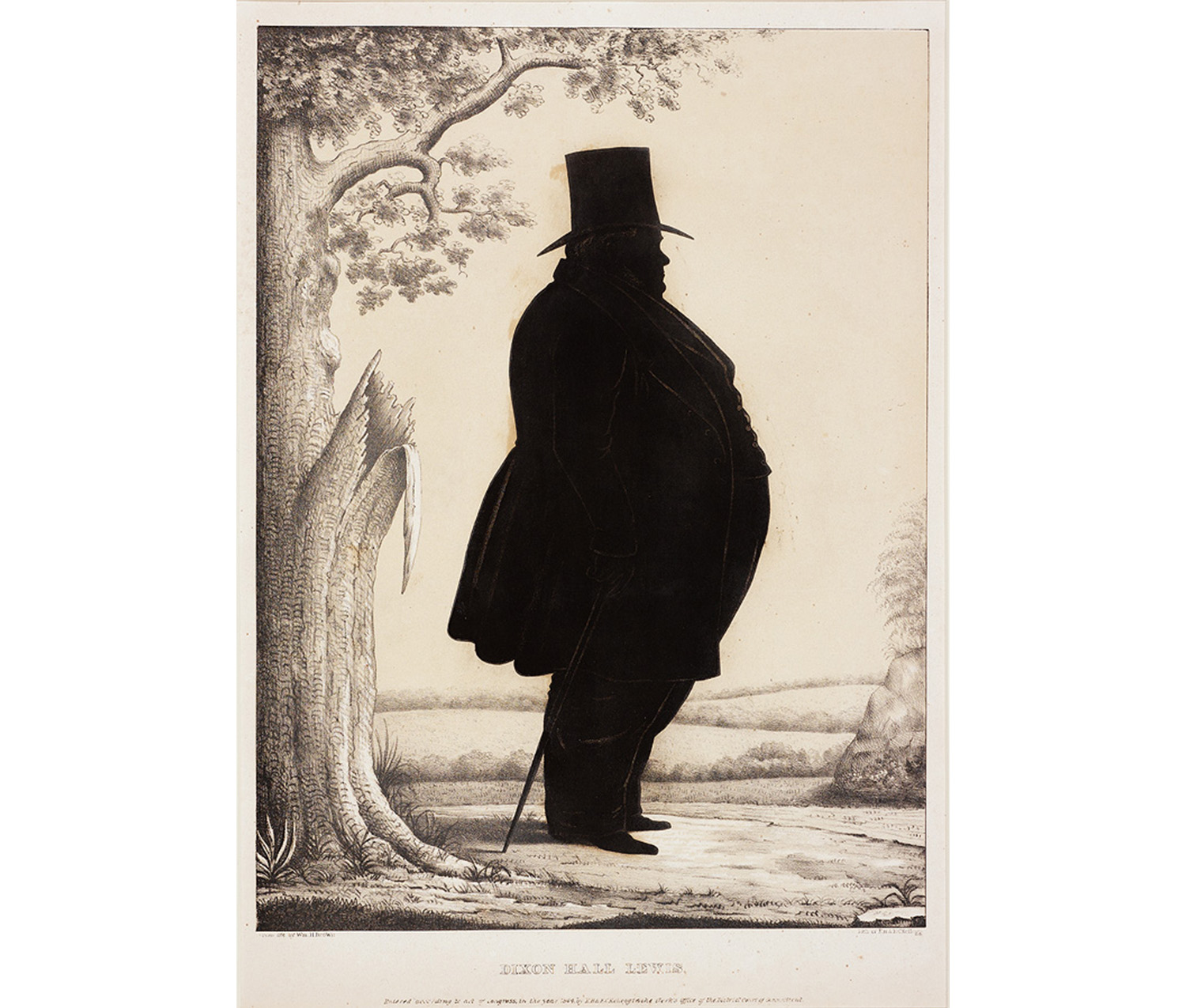
William Henry Brown. American, 1808–1883. Dixon Hall Lewis, from Portrait Gallery of Distinguished Americans, 1844. Lithograph printed in black on medium thick, smooth, cream-colored paper. Gift of Mrs. Chester Dale. Photography by Petegorsky/Gipe. SC 1963.106.15.
The choice to do full body silhouettes is, however, potentially helpful for distinguishing the different figures from each other, since silhouettes are necessarily missing so many other details that could clearly identify their subjects.
The history behind the specific prints owned by the museum is somewhat unclear. The confusion stems from the fact that Portrait Gallery of Distinguished American Citizens was reprinted in the 1930s, and the reprint does not appear discernibly different from the original printing. Neilson Library owns a copy of the 1930s printing which is missing all its plates, so I thought, briefly, that perhaps the museum has the prints from the book in the library. However, the museum file on the prints includes donor information, so we know that the prints were donated specifically to the museum whereas the book in the library was purchased with money from a fund named for President Seeyle, which leaves us with more questions and no answers. If necessary, we might be able to pin down the date of these prints by analyzing the age of the paper they are printed on. For now, however, they remain a mystery.